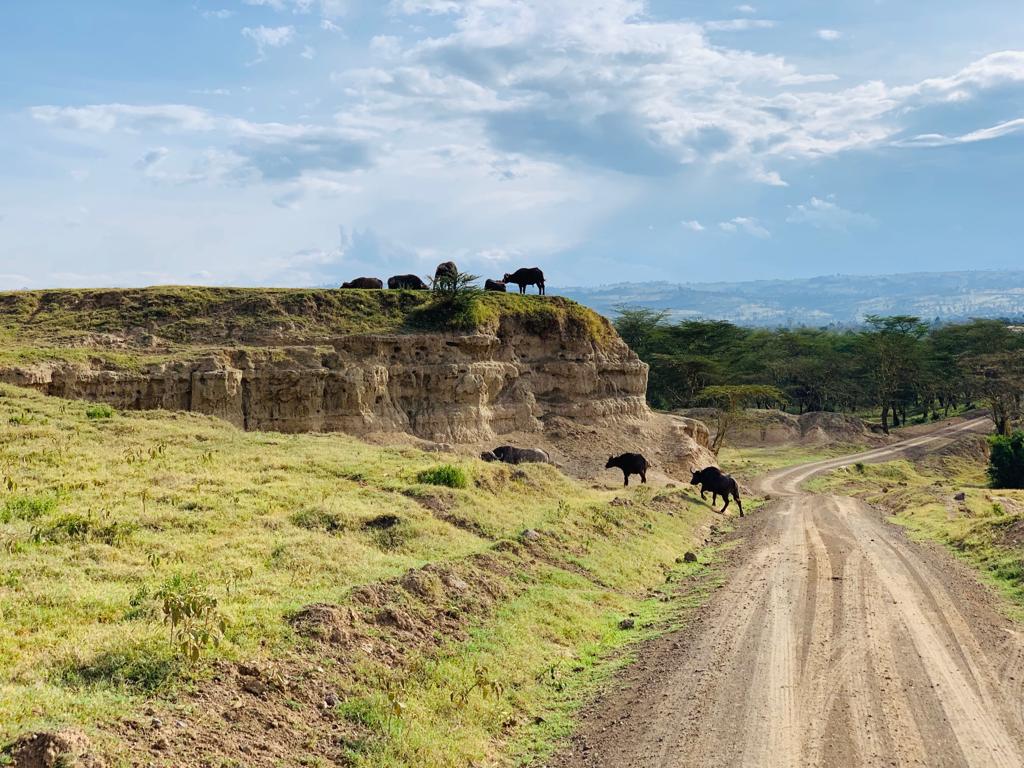
Kenya’s interior pins job creation hopes on a growing tourism sector

World Tourism Day has been marked by the United Nations for decades and this year Kenya is participating in earnest. While 2019’s primary celebrations are being held far across the Indian Ocean in New Delhi, Kenyan towns are also getting in on the action.
The country’s fourth most populous county is no exception — officials in Nakuru are eager to show the country and the world the best of what the scenic Great Rift Valley region has to offer.
From free hikes to the county’s world-famous Menengai Volcanic Crater, where steam can still be seen rising out mounds of upturned lava, to tours of Lake Nakuru National Park, where hordes of pink flamingos gather to feast on algae blooms, to a showcase of local food and handicrafts, the region’s charms were on full display Friday for all to see.
But beneath the red carpet and carnival-like atmosphere was an ardent hope that the tourism sector could help reverse the fortunes of a region that has sometimes lagged behind the rest of the country economically.

And in keeping with this year’s theme for World Tourism Day, “Tourism and Jobs,” county officials were optimistic that the burgeoning tourism industry could help inject Nakuru’s once-slothful labor market with some much-needed pep.
“One in ten people worldwide are employed in the sector,” explained David Mwangi, chairman of the county’s tourism association. “It’s the only resource that can’t be exported, you have to consume tourism at the source.”
“It’s a multiplier effect,” agreed John Mwangi, a chair of the Nakuru County Tour Operators Association. The businessman explained that even the food consumption needs of inbound tourists can help drive demand for higher-value agricultural products and buoy earnings for farmers.
Michael N. Kiragu is no stranger to the economic fruits that a robust tourism sector can bear. His company, Molten Rock Tours, employs nine full-time employees and has been operating in the area for over a decade. He says investors are starting to recognize the county’s allure.

Kiragu points to a shuttered battery factory on the edge of town as our vehicle bounces towards Egerton Castle, a local tourist destination that the county government has looked to market more aggressively in recent months. The facility used to employ hundreds but eventually buckled under the pressure of cheaper imports from abroad.
“The job losses were severe,” Kiragu admits. “But with more tourists coming to Nakuru there will still be work opportunities for our young people.” There is growing evidence that Kiragu may be right.
We meet Sharon at the precipice of the massive Menengai Crater, one of the world’s biggest and best-preserved volcanic calderas. The twenty-three-year-old had studied tourism and hospitality in Nakuru but ultimately traveled to Mombasa — in Kenya’s sun-drenched coastal region, where the sector is more developed — for her first post-graduation job.

But as Nakuru’s hotels and tour operators multiplied to meet the demand of the area’s growing number of visitors, Sharon saw an opportunity to return. She’s now employed full time as a guide with Terra Madre Tours and happily rattles off the county’s top attractions with smiling enthusiasm.
Not far away, a tired-looking man waits by a mountaintop stall, displaying heaps of handicraft souvenirs. “Sales have not been great,” he tells us wearily, “but now that the government is making such advertisements for Nakuru, I think they will be better.”






